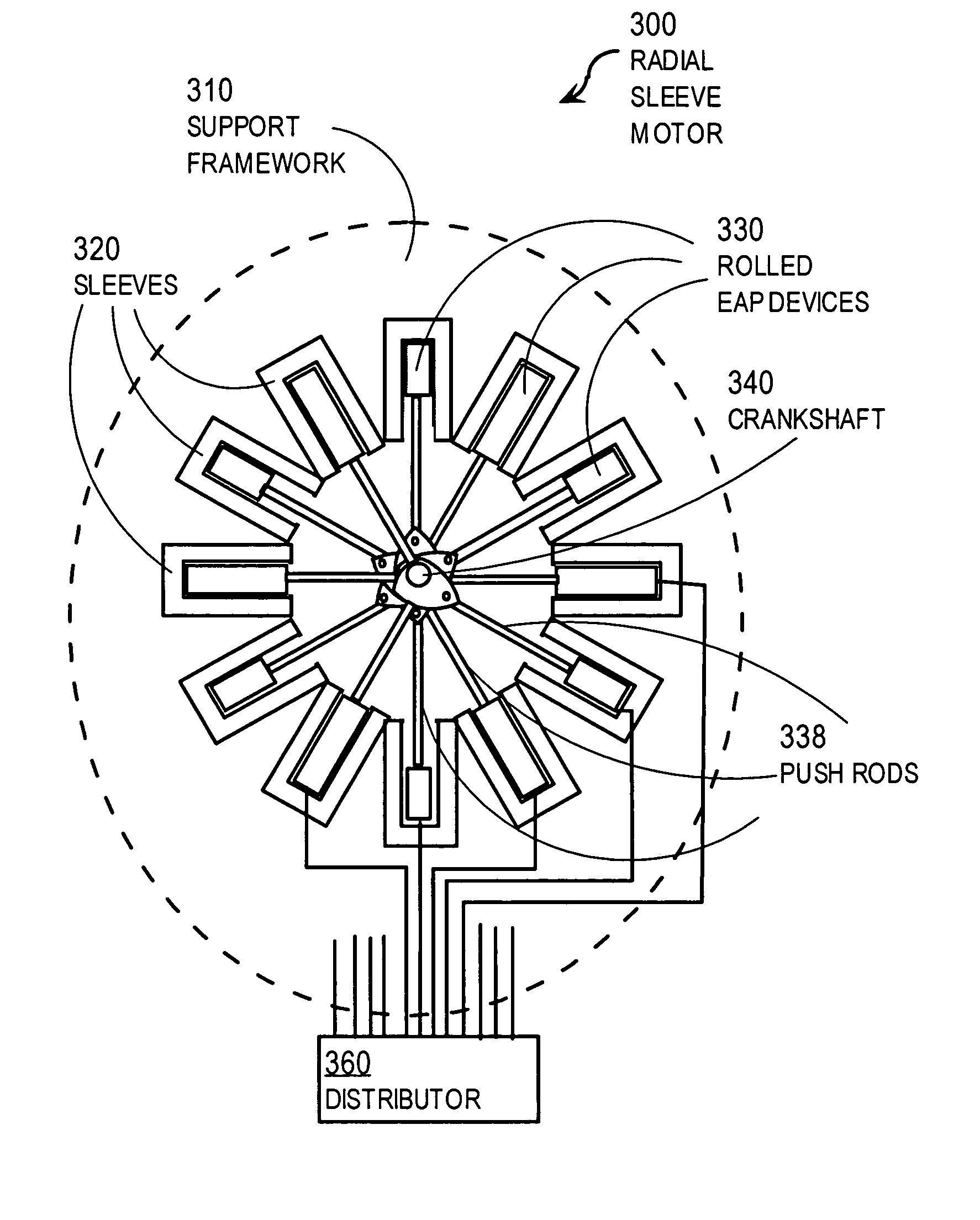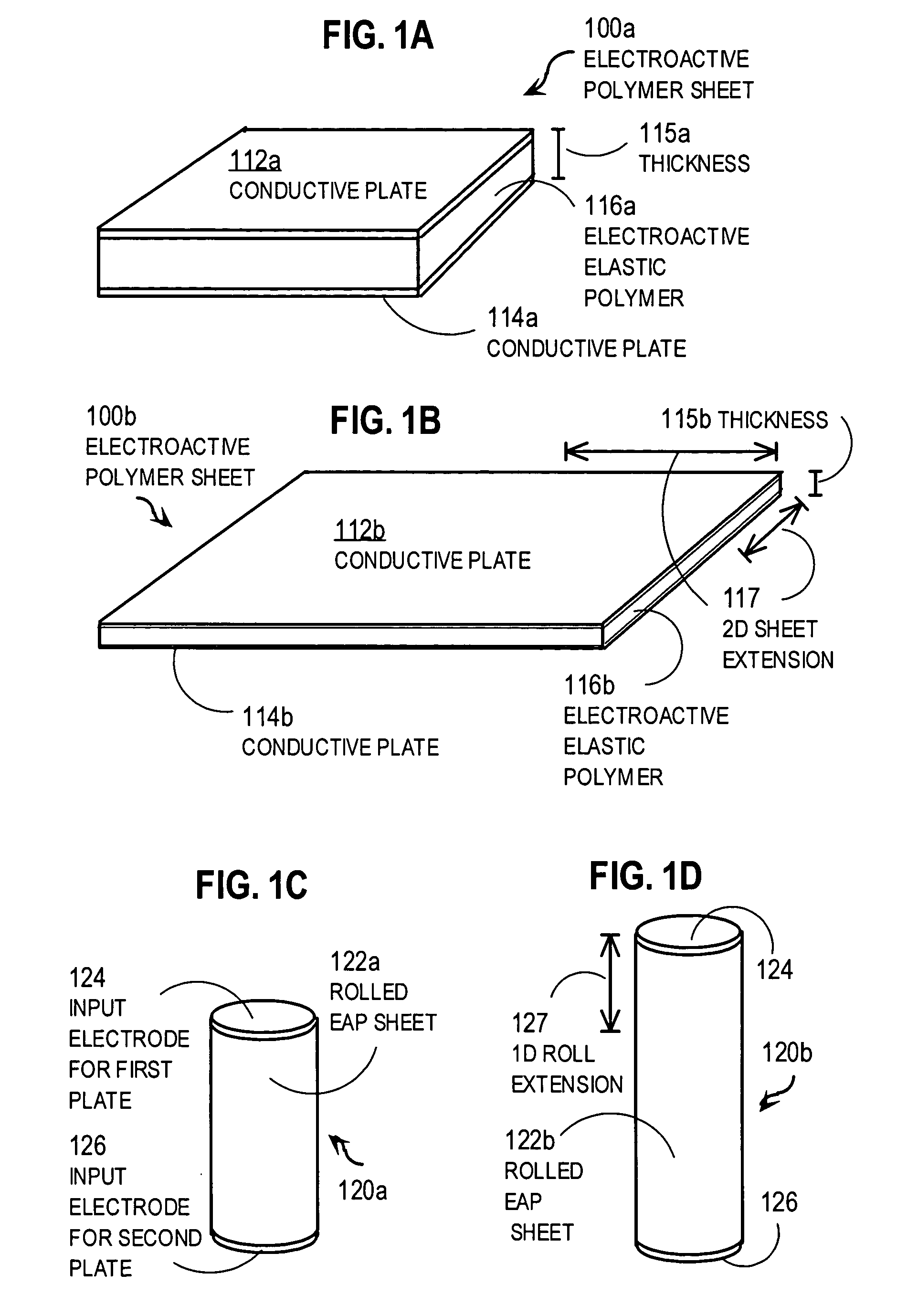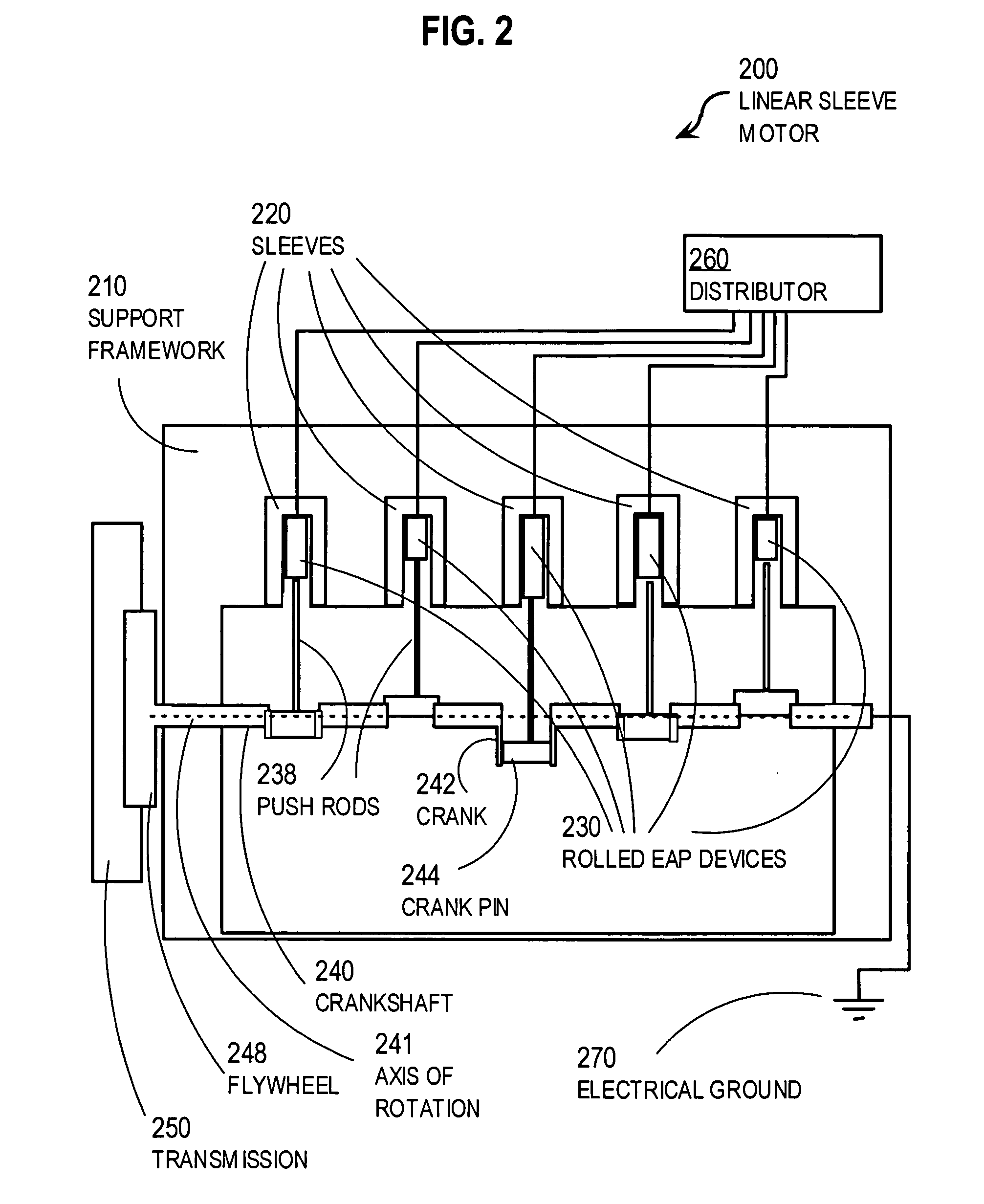Dielectric motors with electrically conducting rotating drive shafts and vehicles using same
a technology of electric conducting rotating drive shaft and dielectric motor, which is applied in piezoelectric/electrostrictive/magnetostrictive devices, piezoelectric/electrostriction/magnetostriction machines, electrical apparatus, etc., can solve the problems of low radar reflectivity, engine dissipation a great deal of energy, and combustion engines that are not suitable for some vehicles, such as satellites and other spacecra
- Summary
- Abstract
- Description
- Claims
- Application Information
AI Technical Summary
Benefits of technology
Problems solved by technology
Method used
Image
Examples
Embodiment Construction
[0051] Motors and vehicle are described that employ electroactive polymer (EAP) devices. In the following description, for the purposes of explanation, numerous specific details are set forth in order to provide a thorough understanding of the present invention. It will be apparent, however, to one skilled in the art that the present invention may be practiced without these specific details. In other instances, well-known structures and devices are shown in block diagram form in order to avoid unnecessarily obscuring the present invention.
[0052] Many embodiments of the invention are described in the context of a motor for a lightweight vehicle of low radar reflectivity, which is made possible using many of the described embodiments. However, the invention is not limited to this context, and may be employed in heavier vehicles, with greater radar reflectivity, as well as in non-vehicular applications.
[0053] As described in Pelrine I and illustrated in FIG. 1A and FIG. 1B, an electr...
PUM
 Login to View More
Login to View More Abstract
Description
Claims
Application Information
 Login to View More
Login to View More - R&D
- Intellectual Property
- Life Sciences
- Materials
- Tech Scout
- Unparalleled Data Quality
- Higher Quality Content
- 60% Fewer Hallucinations
Browse by: Latest US Patents, China's latest patents, Technical Efficacy Thesaurus, Application Domain, Technology Topic, Popular Technical Reports.
© 2025 PatSnap. All rights reserved.Legal|Privacy policy|Modern Slavery Act Transparency Statement|Sitemap|About US| Contact US: help@patsnap.com



